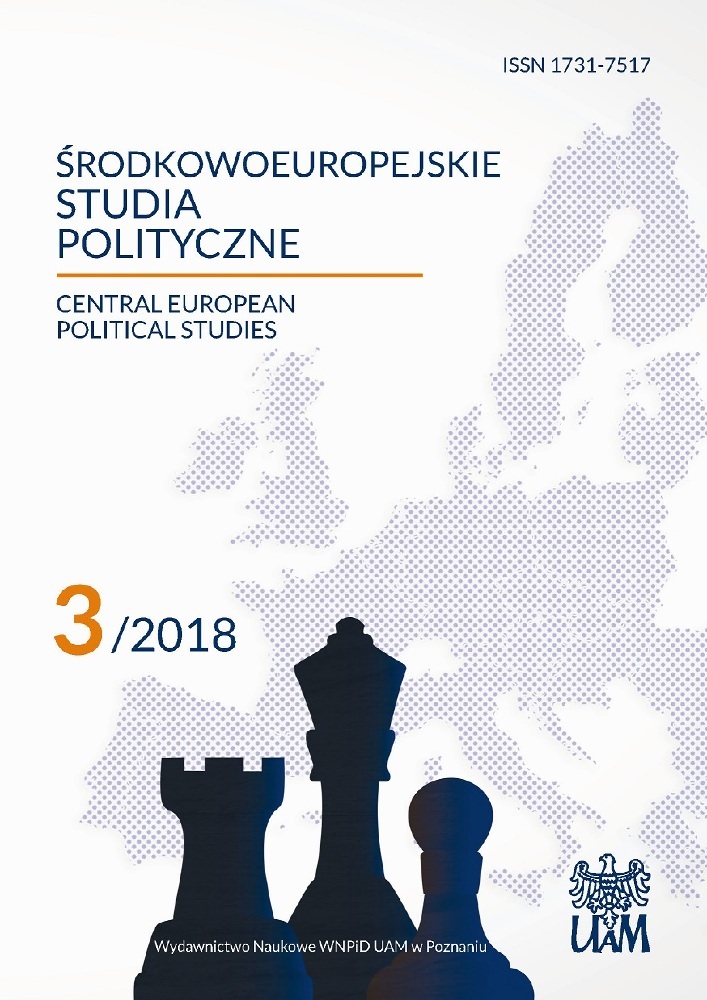Abstract
The paper presents the contemporary information policy implemented by the Ukrainian government. The survey answers the question about the new role of information policy in the state authorities’ activities. The research focuses on the executive branch of power, due to its impact on the internal and external image of Ukraine. The analysis was conducted at the strategic, institutional and operational levels, and concerned the content of messages.
References
Buhmann A., Ingenhoff D. (2015), The 4D Model of the country image: An integrative approach from the perspective of communication management, “The International Communication Gazette,” vol. 1, no. 77.
Castells M. (2006), Mobile Communications and Society; A Global Perspective, MIT Press, Cambridge.
Castells M. (2013), Sieci oburzenia i nadziei. Ruchy społeczne w erze internetu, Wydawnictwo Naukowe PWN, Warszawa.
de Zuniga G. H., Puig-i-Abril E., Rojas H. (2009), Weblogs, traditional sources and political participation: An assessment of how the internet is changing the political environment, “New Media and Society,” no. 11.
Dobek-Ostrowska B. (2006), Komunikowanie polityczne i publiczne, PWN, Warszawa.
Edwards G. (2014), Social Movements and Protest, Cambridge University Press, Cambridge.
Eisenstadt S. N., Giesen B. (1995), The Construction of Collective Identity, “European Journal of Sociology,” vol. 36, no. 1.
Hubenko D., Wall M. (2018), The networked public sphere and Ukrainian journalists, in: Social Media and Politics in Central and Eastern Europe, eds. P. Surowiec, V. Štětka, Routledge New York.
Juris J. S. (2005), The New Digital Media and Activist Networking within Anti-Corporate Globalization Movements, “Annals. American Academy of Political and Social Science,” no. 597.
Kacała T., Lipińska J. (2017), Komunikacja strategiczna i Public Affairs [Strategic Communication and Public Affairs], Wojskowe Centrum Edukacji Obywatelskiej, Warszawa.
Krzyżanowski M. (2008), Konstrukcja tożsamości narodowych i europejskich w polskim dyskursie politycznym po roku 1989: analiza dyskursywno-historyczna [Construction of national and European identities in Polish political discourse after 1989: a discourse historical analysis], in: Krytyczna analiza dyskursu.
Interdyscyplinarne podejście do komunikacji społecznej, eds. N. Fairclough, A. Dusza, Wydawnictwo Universitas, Kraków.
Maćkowska R. (2010), Zaspokajanie potrzeb informacyjnych a aktywizacja społeczności lokalnej [Satisfying information needs and activation of local community], in: Rola samorządu terytorialnego w modernizacji Polski [The role of local authorities in Poland’s modernization], eds. M. Barański, A. Czyż, S. Kubas, Wydawnictwo Uniwersytetu Śląskiego, Katowice.
Mutz D. C., Young L. (2011), Communication and Public Opinion, “Public Opinion Quarterly,” no. 75.
Nye J. S. (2007), Jak osiągnąć sukces w polityce światowej [Soft power. The Means to Success in World Politics], Wydawnictwo Akademickie i Profesjonalne, Warszawa.
Ociepka B. (2008), Dyplomacja publiczna jako forma komunikowania [Public diplomacy as a form of communication], in: Dyplomacja publiczna [Public Diplomacy], ed. B. Ociepka, Wydawnictwo Uniwersytetu Wrocławskiego, Wrocław.
Ociepka B. (2013), Miękka siła i dyplomacja publiczna Polski [Soft Power and Poland’s Public Diplomacy], Wydawnictwo Scholar, Warszawa.
Piechota G., Rajczyk R. (2015), The role of social media during protests on Maidan, “Communication Today,” vol. 6, no. 2.
Piechota G., Rajczyk R. (2016), Przejawy rosyjskiej propagandy w Polsce w przestrzeni nowych mediów [Manifestations of Russian propaganda in Poland in the space of new media], in: Obrazy Rosji i Rosjan w mediach [Images of Russia and Russians in the Media], eds. I. Hofman, J. Maguś, Wydawnictwo UMCS, Lublin.
Rajczyk R. (2016), Nowoczesne wojny informacyjne [Modern Information Wars], Wydawnictwo Difin, Warszawa.
Reznik O. (2016), From the Orange Revolution to the Revolution of Dignity: Dynamics of the Protest Actions in Ukraine, “East European Politics and Societies and Culture,” vol. 30, no. 4.
Turcotte J., York C., Irving J., Scholl R. M., Pingree R. J. (2015), News recommendations from social media opinion leaders: Effects on media trust and information seeking, “Journal of Computer-Mediated Communication,” no. 20.
Seib P. (2012), Real-Time Democracy; Politics and Power in the Social Media Era, Palgrave MacMillan, New York.
Weeks B. E., Holbert R. L. (2013), Predicting dissemination of news content in social media: A focus on reception, fending and partisanship, “Journalism and Mass Communication Quarterly,” no. 90.

